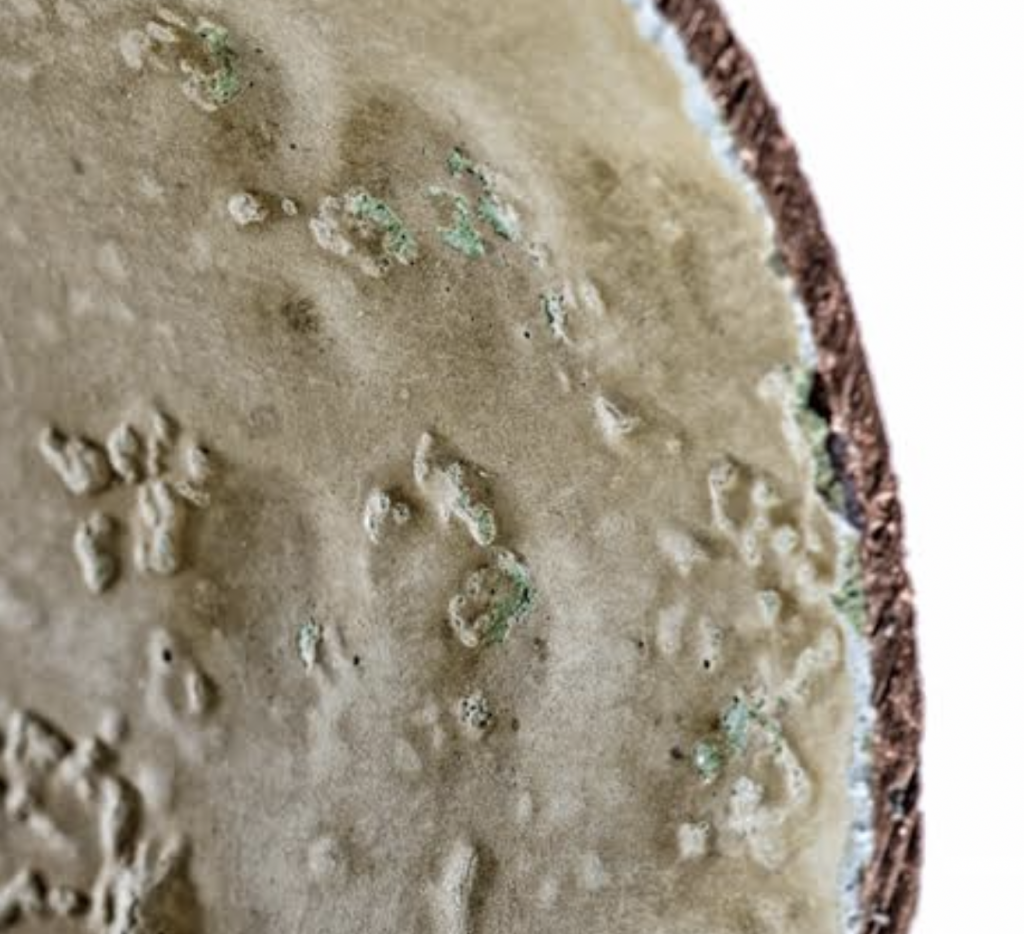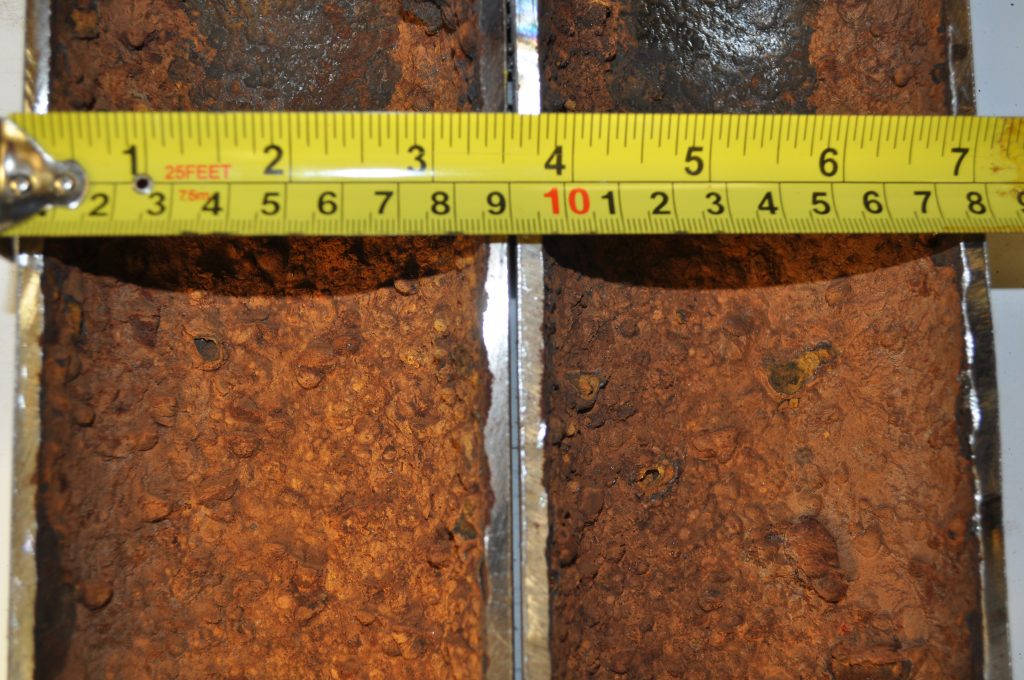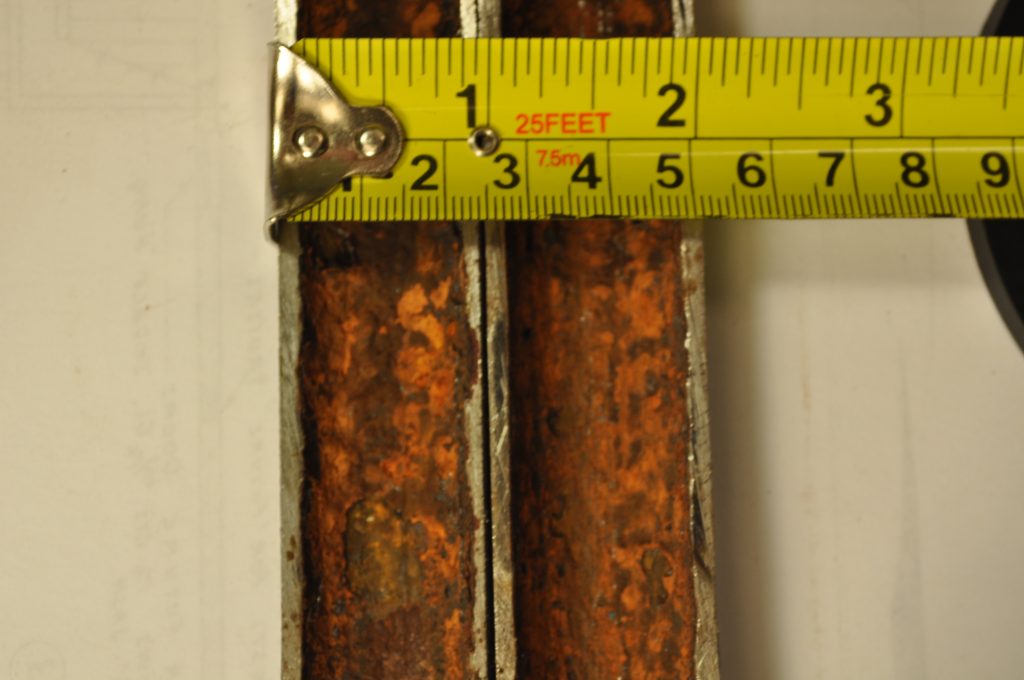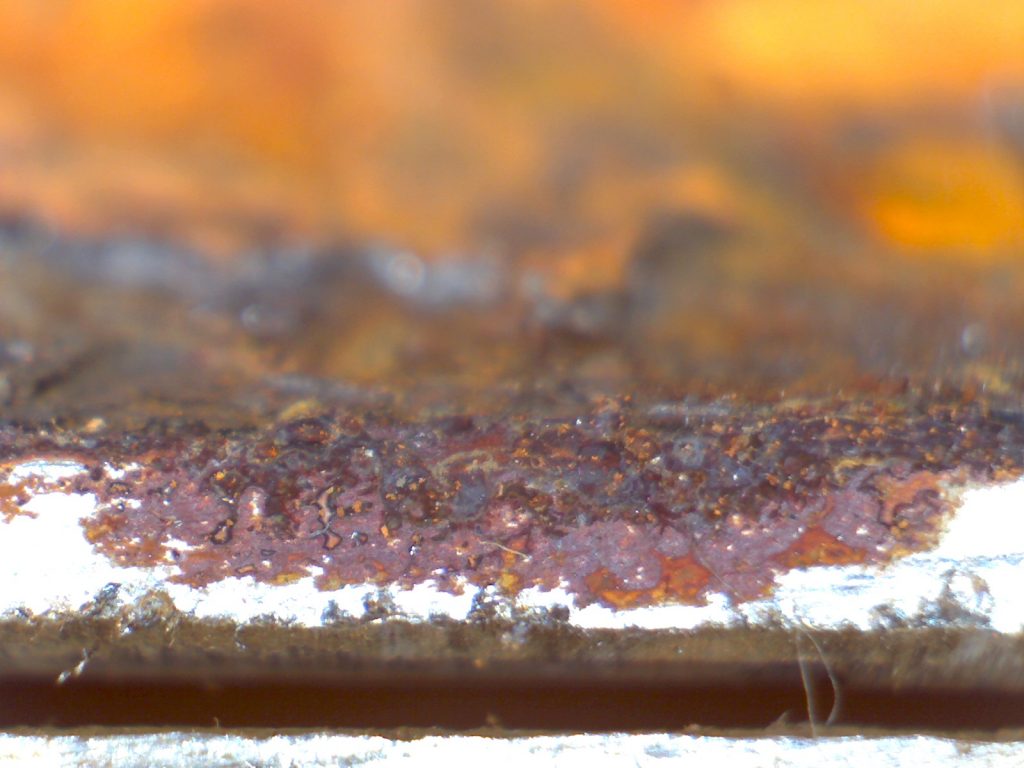Prepared by Daniel R. Robles, PE, MBA
Originally published: January 2013
Updated: March 2021
Summary:
Epoxy is a remarkable substance with many applications in construction, plumbing and pipe renovation industries. The process and application of epoxy coatings and liners is well presented in laboratory research and service experience. Numerous publications exist which specify application, inspection and testing standards for applying epoxy on many types of surfaces. Like all sealants, coatings, or barriers, it is essential to comply with the applicable standards written specifically to each and every application of the substance.
In the case of blow-in epoxy applied for the purpose of renovating pressurized domestic water supply pipes, the applicable standard ASTM F2831-12 which likewise references multiple other standards related to testing, inspection, and quality assurance of epoxy applications specific to domestic water supply pipes. The degree to which commercial application of blow in epoxy deviated from these standards is the extent to which the public is poorly served by commercial enterprise.
Multiple lawsuits have been filed against applicators of blow-in epoxy coatings applied to domestic water supply piping. While little information is made available about these cases, what has been observed appears to be related to non-compliance to known engineering standards. The purpose of this document is to identify some of those deviations and postulate how they manifest in observes failures. It is therefore advisable that Engineering oversight is required to assure that the epoxy pipe coating applications are marketed, sold and performed with the expectation that professional standards have been applied, and independent testing has been performed as a condition of the contract bidding price, funding, insurability, and associated warranty claims.
This article does not apply specifically to non-pressurized drain, sewer, or vent pipes, because their larger diameters, different operating conditions, configurations, and consequences of failure are substantially different. Otherwise, all engineering standards for epoxy applications still apply to those plumbing elements as well.
Based on the information herein, this professional engineer does not recommend blow-in epoxy liner for any pressurized domestic potable water pipe service unless full compliance with governing documents can be explicitly demonstrated for each application.
Introduction:
Epoxy pipe lining is often touted as a low cost alternative to repiping the domestic water supply of buildings ranging from single family homes to high rise multi-family or commercial buildings. Many of the claims made regarding the equivalence between lining and replacing pipes may lead building owners to believe that epoxy lining in a permanent solution rather than a stop-gap measure, at best.
This study was originally conducted upon request from a homeowners association as part of a wider investigation into appropriate technologies for renewing an aging galvanized potable water system in a 20+ story, 250+ unit multi family residential structure. The study has been updated to include continued evidence of epoxy liner failures brought to our attention as a result of publishing that original study.
The concern is that a relative lack of balanced and factual information is available to the HOAs regarding the risks and consequences of committing to epoxy pipe liner technology for repair and renewal of their potable water systems as an alternative to complete re-piping of their structure.
This case study is conducted from a small sample of epoxy failures encountered in the Pacific Northwest. The case study attempts to focus on vulnerabilities of all epoxy applications and does not attempt to isolate a particular supplier or contractor.
The greatest determinant of success or failure is the training and experience of the contractors in epoxy mixing, preparation, and inspection specific to the characteristics of the plumbing system being repaired. While no ill-intent is meant to reflect on the professionalism of these individuals, from an engineering point of view, there are currently no practical means to observe the adequacy of surface preparation, to test an application adhesion and thickness within a small diameter pipe. In addition, there are no option to correct a poor installation or mitigate application failures, except to re-pipe. So, why not just do a repipe?
This document is organized into four sections.
- An introduction to the epoxy liner process identifies the major process components, relevant industry claims, and relevant counter claims.
- The literature review identifies some epoxy failures as well as governing documents for the epoxy application process. Epoxy liner failure modes are established.
- This case study provides photographic demonstrations of actual epoxy liner failures on galvanized pipe in the Pacific North West area.
- The final section compares the actual sample with the known failure modes, quality assurance vulnerabilities, and promotional literature specified in the prior sections.
SECTION 1: Introduction to the epoxy liner process:
Epoxy is produced transported and stored as a two liquids. Once mixed, the two liquids react to become a permanent and irreversible solid. There is a delay in this reaction that allows some time for application onto a surface. The precise ratio of each component liquid is essential to assure that no remaining chemicals remain unbound.
The epoxy liner process involves isolation of sections of the existing pipe, drying the pipes with hot air and then sandblasting the inside walls with pressurized air and an abrasive material in order to remove corrosion and oxidation. Bare metal is required in order to assure proper adhesion of the epoxy coating. Once prepared, the epoxy is blown through the pipes in a liquid state using pressurized air where surface tension is relied upon to produce a complete and uniform coating of the surface. The epoxy is the “cured in place” either by the application of heat and/or the passage of time (pot life).
Claimed benefits:
The following select claims are paraphrased from publicly available epoxy industry literature.
- An epoxy lining delivers benefits that re-piping cannot.
- More durable than copper pipe, with a lifespan of 40 – 60 years
- Testing engineers estimate the life expectancy of the epoxy is roughly 100 years.
- Safer for drinking water than unlined metal or cement pipes
- Less mess, cost and time than pipe replacement
- Eliminates corrosion that leads to blocked and leaky pipes
- Pipe lining is as much as 50 percent less expensive than traditional pipe replacement costs.
- Epoxy lining can be performed in any metal pipe in any building, structure, or environment, above or below ground
- Lining prevents toxic heavy metals from leaching into drinking water and prevents leaks and breaks in pipe systems.
Counter Claims:
The following select claims are paraphrased from plumbing practitioners and engineering sources [5].
- Many of the claimed benefits cannot be proven true for most practical domestic supply applications.
- Failures have been observed in installations ranging from 2 years to 15 years after application.
- Complete removal of rust and corrosion to 100% bare metal is not likely achievable.
- It is not possible to verify 100% proper surface preparation has been achieved.
- Difficult to test and inspect pipe de-scaling/cleaning process, epoxy thickness, or epoxy adhesion.
- Epoxy provides no structural reinforcement value. Weak pipes become weaker pipes.
- Sandblasting may weaken pipes and may be responsible for premature failures.
- Epoxy continuity must be maintained. Pipes cannot be repaired or modified forever into the future: no cuts, repairs, valve replacements, or add ons.
- Epoxy is a brittle substance vulnerable to mechanical stress such as cutting, vibration, thermal expansion, bending, etc.
- Failure mode often results in clogging with shards of solid epoxy in potable water supply.
- Reduction in pipe diameter may not comply with original design or codes.
- Compliance with current building, permitting, and performance codes unknown.
- Possible pooling due to gravity, or ridging of epoxy causing turbulence and turbidity.
- Some corrosion originates on the outside of the pipe, epoxy provides no protection.
SECTION 2: Literature Review
It is advisable that each building owner hire a qualified professional engineer conduct their own due diligence and system definition prior to selecting an epoxy proposal. This section is not meant to be an exhaustive academic literature, rather, it represents several early references that we have cited for our own clients.
[1] Impact of an Epoxy Pipe Lining Material on Distribution System Water Quality by Ryan Price and supervised by Andrea M. Dietrich, PhD., Chair, Environmental Engineering, Virginia Polytechnic Institute. This document provides a broad and useful description of the epoxy chemistry. The paper provides a literature review citing relevant industry standards for water quality while as well as laboratory tests and case studies produced by the authors. The results of the study confirmed most existing data that reports that properly-installed epoxy linings have a minimal impact on water quality parameters unless mixed improperly, likewise, improper mixtures may have detrimental health impacts.
[2] Epoxy Adhesion Tests Sponsored by the Texas Department of Transportation and used to develop simple and reliable tests for epoxy adhesion to metal bars used in reinforced concrete. While re-bar epoxies may use a different chemistry and curing method as potable water systems, it is instructive nonetheless as the goal is to adhere to and waterproof the metal surface. The two tests include a “rust test” and a “knife blade test”. In effect, they wet the sample and look for rust and they apply a shear force to the epoxy and observe adhesion. Both conditions are present in potable water systems. As such this study is included in our lit review.
[3] Military Application Epoxy Standard June 2001 IN-SITU EPOXY COATING FOR METALLIC PIPE; Department of The Army; U.S. Army Corp or Engineers. This document specifies process and contractor qualifications, controls, tests, and submittals for use of Epoxy Liner in potable water systems applicable to the Army and other US military facilities. Emphasis is placed on quality control of the application process, submittals at progressive stages of the work, material and performance to industry and military standards, as well as testing and inspection specification.
[4] INVESTIGATION REPORT ON THE FAILURE OF MAKKAH-TAIF WATER TR This paper documents one of the few published failure sequences that I was able to find. The applicability is on large potable water pipes (24-36 inch diameter) rather than small domestic systems. The benefit however is the ability to control the surface preparation and inspection of such a large pipe. Notable outcomes are that the failure modes are very similar to those that we did in fact find in smaller domestic pipes. This allows us to isolate the characteristics of the epoxy itself independent of the surface preparation.
[5] Cambridge Plumbing Systems Ltd. The claims of this suit allow us to form the basis of counterclaims to contrast with the epoxy industry advertisement. These claims are derived from the opinion of professional trades whose bias is to replace piping systems when they get old. Among the claims is that a comprehensive condition assessment of the piping system is performed. The next citation in this lit review demonstrates what such a condition assessment may entail.
[6] Potable Water Pipe Condition Assessment For a High Rise Condominium in The Pacific Northwest The purpose of this condition assessment was to establish a minimum baseline condition for an existing potable water system. Factors taken into consideration include water quality, serviceability and structural integrity of the existing system. Remaining pipe thickness and and stress at threads form basis of applicability for possible epoxy liner. Such assessments are essential for the HOA in considering future remediation options as well as for future engineers and contractors to recommend technologies to improve the system.
[7] Layman’s Guide to Epoxy Paint / Coating Failures: This website authored by an expert in epoxy coatings contains a wealth of information about epoxy, applications, success stories and failures; balanced and comprehensive opinion. “Coatings fail for a number of reasons, the most common being moisture, dirt and contaminants, and natural breakdown and weathering. Careful selection of your coating, an understanding the possible causes of failure in your particular situation, and careful surface preparation will all significantly reduce the occurrence of coating failures.”
Governing Documents:
[8] NSF/ANSI Standard 61 Drinking Water System Components – Health Effects is the standard that establishes minimum health effects requirements for materials, components, products, or systems that contact drinking water, drinking water treatment chemicals, or both.
[9] AWWS C210-3; Liquid-Epoxy Coating Systems for the Interior and Exterior of Steel Water Pipelines; A published standard by the AWWA (American Water Works Association). This document is cited in most epoxy liner publications including the above references herein. The purpose of this standard is to provide the minimum requirements for liquid-epoxy coating systems for the interior and exterior of steel water pipelines, including material, application, inspection, testing, performance requirements, handling, and packaging requirements.
[10] ASTM F2831 – 19: Standard Practice for Internal Non Structural Epoxy Barrier Coating Material Used In Rehabilitation of Metallic Pressurized Piping Systems aggregates the multiple standards for testing, performance, labeling, preparation, inspection, etc. Included the following test specifications: D3359 Test Methods for Measuring Adhesion by Tape Test, D3363 Test Method for Film Hardness by Pencil Test, D4541 Test Method for Pull-Off Strength of Coatings Using Portable Adhesion Testers, etc. Purchased copy on file.
SECTION 3: Case Study; Introduction
Using Linkedin, Facebook, and several social media technologies, multiple sources were found who had witnessed epoxy liner field failures. A reputable plumbing contractor in the Seattle Area provided samples of epoxy liner sections that were removed from at least three properties and which failed within 4-7 years of entering service. The exception is a blocked pipe which failed immediately, but went undiscovered for a period of time after the contractor had left the job site and the plumber was called to troubleshoot and inoperable fixture.
Sample: The sample used in this case study represents six common components of a potable water system including: 3/4 Inch straight pipe, a Tee section with a 3/4 pipe fitted at one end and a reduction to a 1/2 inch brass fixture at the other end, two 3/4 inch elbows in series with directional change, a large 2 inch elbow, a brass valve that has been rendered inoperable and coated as a coupling. Finally, an example is provided of a 3/4 inch pipe which experienced a complete blockage at the elbow and was not discovered by the epoxy process inspection.
A short video may be found at the following URL:
The Straight Pipe section
The two straight pipe samples leading to both the Tee section and the blocked elbow appeared smooth and well-applied. On closer review, the straight sections revealed a non-uniform thickness that exceeds recommended thickness of 4-10 mils [1], [2].
Application standards require close monitoring of the quantity of epoxy that enters a particular length of pipe as a means of determining completion of application. If this standard was followed, then a corresponding deficit of epoxy thickness would appear elsewhere in the section.
The Tee Section
It is relatively easy to predict that the presence of a tee would create a difficult segment for both the cleansing medium as well as the epoxy coat. In essence, each fluid must disorganize, split, change direction, and reorganize – losing much of their momentum at a single point. Special considerations must be made for this type of transition. The resulting poor preparation of the surface resulted in rapid epoxy failure. Each Tee section represented different failures. The first transition goes to 3/4 galvanized pipe and the second connects to 1/2 inch line. The brass fitting was applied after the epoxy and demonstrates no coating. There is however a ring of water intrusion at the transition. This would be typical of such a transition occurring is, say, a valve replacement or fixture update.
The Large Section; 2 – inch elbow
The large pipe offers us a view into the behavior of the sandblasting media and epoxy adhesion and texture upon curing. Instead we find extensive rust nodulation covered somewhat by epoxy as well as a widespread failure of the epoxy adhesion. There is a possibility that zinc may remain on the pipe – the galvanization cathode is know to be highly detrimental to proper epoxy adhesion. Any new replacement pipe must be stripped of it’s zinc plating prior to epoxy coating.
Inoperable Brass Valve/Coupling
This coupled gate valve was rendered inoperable for reasons associated with the lining process. The valve service would likely have been moved elsewhere in the system. In any case, the valve section offers a clear view of epoxy liner surface texture and adhesion properties upon brass fittings.
Anatomy of an Epoxy Failure:
When an epoxy failure does happen, it is likely to occur at the location where the pipe is already at its weakest; pitted areas and threads.
As such, a poorly applied epoxy liner could weaken a pipe considerably. The result could be a catastrophic high-volume pipe failure requiring a high insurance payout, which would not otherwise be attributed to epoxy coating.
Serviceability:
Many failure modes in piping systems arise from the corrosion or breakage of brass valves. Homeowners also need to periodically update fixtures or add to their plumbing system. Accidents such as collision with a pipe running through a parking garage or the introduction of filtration or other accessories all require an interface with the primary plumbing system.
Wherever cutting or unscrewing a connection breaks the continuity of the epoxy liner, the introduction of water behind the coating becomes a hazard to the integrity of the coating. The epoxy coater would need to be on hand to seal any repair at any time in the future. For this reason, serviceability is an important subject for the epoxy applicator to address.
Failures in Copper Lined Pipe.
While this case study does not explicitly include copper pipe, we have seen multiple failures in copper for reasons that are similar to steel. Copper is a much softer material and far more prone to blow-outs during sand blasting. Copper has thinner wall which are already compromised by corrosion. Removal of too much base material can leave the pipe vulnerable to breakage. There are many known reasons why copper corrodes from electrolysis to pinhole leaks – it would be best to first eliminate the source of copper corrosion.
The following photographs of a failed epoxy installation in copper pipe was taken from a 10+ story high rise condominium on the East Coast of the United States. Note close-up green spots are likely areas of new copper corrosion beneath the epoxy.
Existing pipe conditions:
Galvanized steel often experiences the growth of nodules and scale on the inside surface of the pipe. The material that builds these growths comes from the thickness of the pipe. Large nodules are often accompanied by deep pitting. These pits can be quite numerous and deep often compromising the strength of the pipe – especially around threaded areas as the thread cuts deep into the original material and is pre-stressed by tightening. A comprehensive condition assessment of the pipe should be done prior to the application of the epoxy coating [6]
Observed wall thickness condition: The following photographs represent areas that were discovered in a recent piping condition assessment for a client community considering an Epoxy Solution. In some many places, less than 25% of wall original wall thickness material remains.
Threads: Pipe threads are cut on a tapered end and bind against each other accumulating stress as torque is applied to the adjoining pipes. These stresses remain in the steel as stored energy – like a spring can store energy when compressed and release energy when liberated.
Observed threaded sections: Threaded sections are particularly vulnerable to failure because they are already under a highly stressed interference fit condition, a failure would likely propagate around the circumference of the pipe or provide a path for leakage or catastrophic high volume pipe failure.
Threaded section demonstrating active corrosion near thread root. As little as 1 mm of material remains. The Epoxy Lining system removes additional material from the pipe wall.
Section 4: Conclusion
Epoxy coating of steel is a widespread practice in construction and mainline water service [2] [3] [4]. The failure modes and vulnerabilities of epoxy are widely known and highly consistent in their progression [7]. It is also widely recognized that the project planning, surface preparation, and precise measurement and application of the ingredients to the substrate are the most significant variables in determining the probability of a successful epoxy coating assignment.
These factors are addressed in significant detail by the U.S. Army Corp of Engineers [3], The American Water Works Association [9], the American Society of Testing and Materials [10], the Society of Protective Coatings, etc., have all developed standards for the planning, preparation, measurement, and application of epoxy coatings. It can be assumed that if, and only if these standards are followed and documented, then failures in epoxy coatings would not occur.
A comprehensive collection of tests and inspection criteria has been developed for epoxy coatings in any number of applications including internal water pipe coatings [3]. Such tests as the knife blade test or those tests specified in ASTM F2831 are simple, fast and conclusive [10].
The Epoxy Paradox:
Epoxy coating is extremely strong and adhesive when it is applied correctly [7]. The question arises that if an application should fail a test or inspection, what is the contingency plan to remediate the flaw? How will the epoxy be removed and how will the re coating be applied? If a single failure is found, what test sampling strategy must be applied to give a high likelihood that no other flaws exist in the system? Under what warranty claim would a failed test be covered and to what extent will coverage be warranted?
The serviceability issue is not trivial. Homeowners must be comfortable with the idea that no further modifications, maintenance, or improvements can be made on their current potable water system.
Double Jeopardy: When an epoxy failure does happen, it is likely to occur at the location where the pipe is already at its weakest; pitted areas and threads. As such, a poorly applied epoxy liner could weaken a pipe considerably. The result could be a catastrophic high-volume pipe failure requiring a high insurance payout, which would not otherwise be attributed to epoxy coating.
Therefore, Engineering and construction management representation and oversight can help assure that the epoxy liner material and contractors are aware of the expectation that industry standards will be applied and independent testing will be done as a condition of the contract bidding and warranty claims so that they may adjust their pricing to meet customer expectations.
Disclaimer
Nothing in this document or website constitutes, or is meant to constitute, advice of any kind. In no case is this document or website or any portion of the document or website or the materials available thereon or therefrom to be construed as the practice of professional engineering or of any other profession or the offering of professional advice. If you require advice in relation to any engineering, legal, financial or medical matter, you should consult an appropriate professional. Opinions rendered by any of the authors who contribute to the document or website do not necessarily reflect the opinions of The originating website. Engineering opinions rendered by any author are solely for the purpose of education and are not engineering advice. If you use any opinion presented in this document or on the website in any way whatsoever, you agree to hold The Engineer and the website harmless of your use of those opinions.
Prepared by: Dan Robles, PE
Community Engineering Services, PLLC















